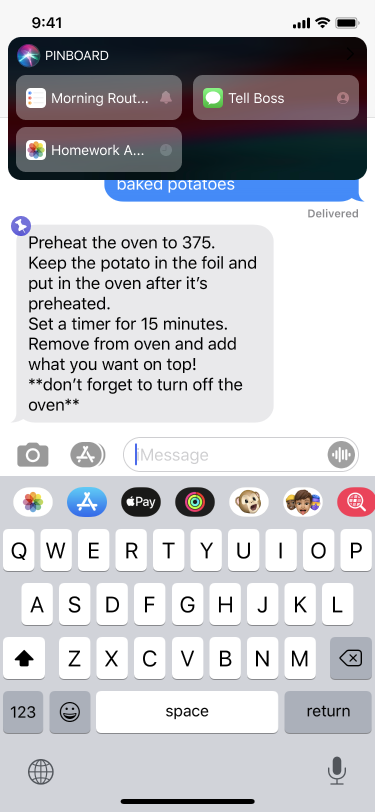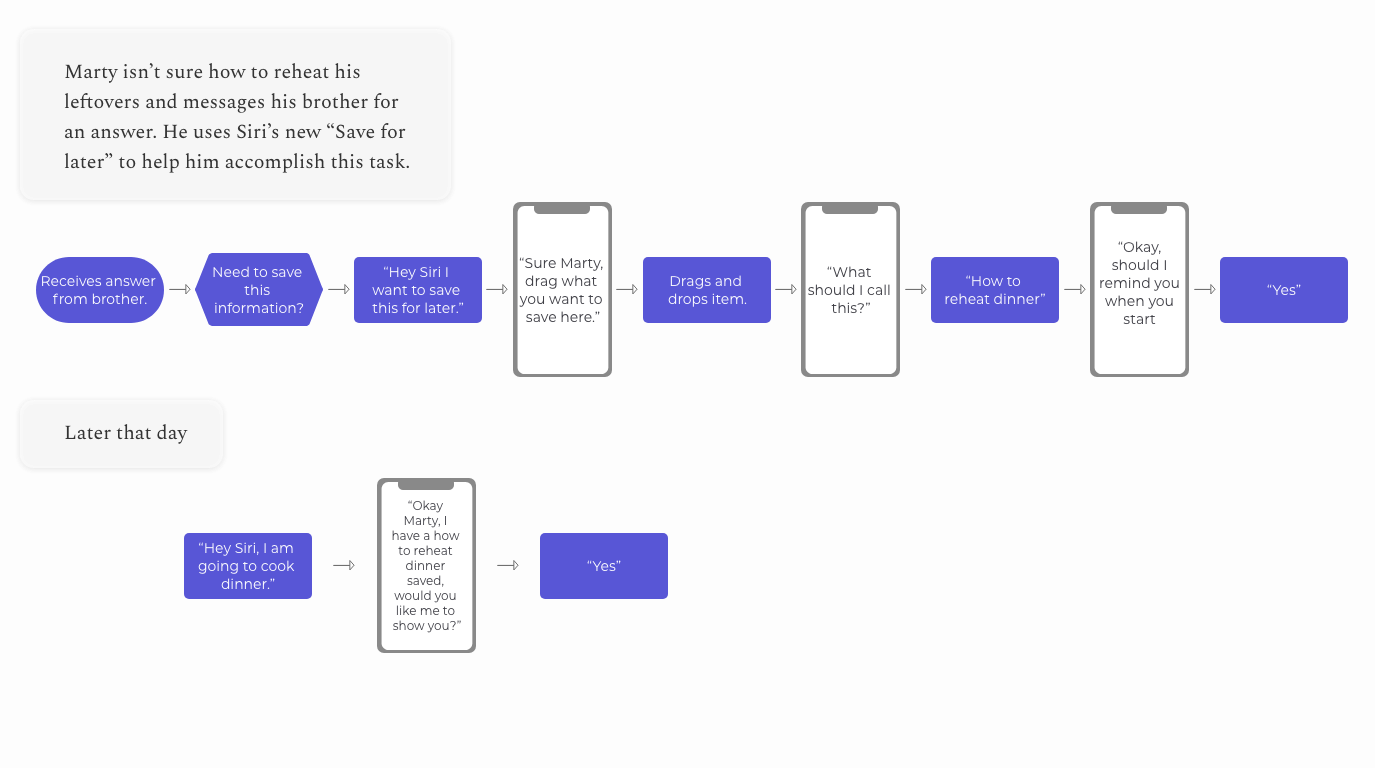
Overview
- ContextPersonal Project
- RolesResearcher | UX/UI Design | Interaction Design | Testing
- NotesFigma, Procreate
80 Hours
Problem
Design a feature that maximizes access without creating additional distractions. This will increase the user’s ability to access and input information quickly, but should avoid unnatural prescriptive steps.
Short-term memory (STM) is fleeting. This means that task efficiency is essential to reducing mental strain. Smartphones are critical tools that enable people with limited STM to track track habits, give reminders, and document daily experiences. Still, phones are also incredibly distracting, which can make it harder to do things quickly and cause more mental strain.
Solution
A pinboard function for Siri—a universally accessible widget integrated with Siri commands and iOS applications to address daily challenges for users with limited STM.
Featuring:
A clean, distraction-free interface.


Interactions that accelerate actions.
Small footprint to see context.


Building an intimate customer experience while shopping small online.
- Solution
- ClientEupnea Home
- My FocusResearch
Wireframes
Visual Design
Testing
- NotesSketch, Figma, + Invision
Ongoing project
In September 2019, I was approached by eupnea to build an e-commerce site that would cater towards their customers and grow a wider client base. eupnea is a small business that designs, creates, and sells meditation and wellness products. As a small-batch company, their product line is limited and they aim to be open and transparent with their customers.
Research & Empathy
Attention
Accomodation
Accomodation
Accomodation
Explanation
Explanation
Explanation
Concentration
Retrieval
Quotes from User Interviews
01
02
03
Users...
- Struggle to stay on task and recall tasks as they need to happen.
- Use productivity tools for notes, scheduling, reminders, and visual reference.
- Prefer dictation to writing/typing because speaking requires less mental processing.
- Depend on visual reminders to help jog task memory.
- Like and dislike technology because things like phones are helpful but also a reminder that STM loss affects even the simplest tasks.
Compare Use Cases
I compiled thoughts into an empathy map for reference. Then I compared the different applications interviewees referred to to solve daily challenges. I compared these applications along different categories, noting what frustrations were experienced in the process of using them.

Use Case Insights
- Most cases are as needed and therefore on the go.
- Transitional tasks are the most challenging.
- Multi tasking isn't an option
- Remembering verbal queues is hard but remembering an idea long enough to type is harder.
Accounting for Accessibility
Below I lay out three main areas that challenge limited STM individuals and accommodations that reduce how these impact user's mental fatigue.
Synthesis

After suffering from a stroke, Marty has struggled with STM since the age of 16. He uses his phone daily to record things that he might forget and remind him of his daily schedule. It is his primary communication tool, but it can take a long time to find the information that he needs.
To help Marty complete tasks more quickly, I created a series of user flows focused on accomplishing singular tasks. Their simplicity ensured simplified processes to accomplish tasks.

Ideation
I explored different ways to visualize Pinboard's features through sketches. This was a challenge because Siri’s design is oriented around VUI rather than a traditional interface.
I asked myself how I might represent Siri components that were not solely voice interactions. I drew inspirations from Shortcuts and Siri’s App Suggestions.
- The app icon to give context and a possible memory trigger of the pin.
- Pin label to differentiate
- A small icon if there were reminders associated with the pin.
Making the Widget and alerts dark with the Siri background differentiated them from traditional notifications but also marks their integration with Siri.
In contrast to the bite-sized information of the widget, creating pins was much more complicated.
I used toggles to limit the information at a given time. As more preferences were selected the menu expands or contracts like an accordion.


Visual Design
Interactions
As the product prioritized quick actions, interactions were key to its conceptualization. Interactions could speed up the retrieval process and mimic "remembering" without the mental tax.
I built prototypes in Principle (first attempt!) to better illustrate how interactions functioned to reduce mental fatigue. To be successful, interactions needed to:



02
03
01
Testing Prototypes
Though incomplete, I feel that adding Pinboard to Siri would help mitigate mental fatigue and enable quicker interactions for users with limited STM.
Priority Tasks
Learning Curve
Colaboration
Testing
Takeaways
- Learning new interactions would take time
- All users commented on how “awesome” it would be if you could do this.
- Copy needs to be clearer (alerts and setting options).
Goals
- Understand how users navigate the iOS interface
- Identify problem areas regarding navigation and content areas
- Validate the utility of the feature
Quotes from Uster Testing
Remarks
Pinboard was a passion project, but it helped me grow as a designer and researcher. It helped me understand the process of iterative design for a completely new product. Though incomplete, I feel that adding Pinboard to Siri would help mitigate mental fatigue and enable quicker interactions for users with limited STM.